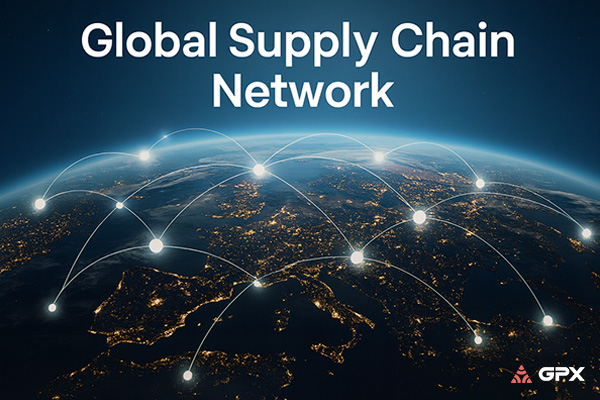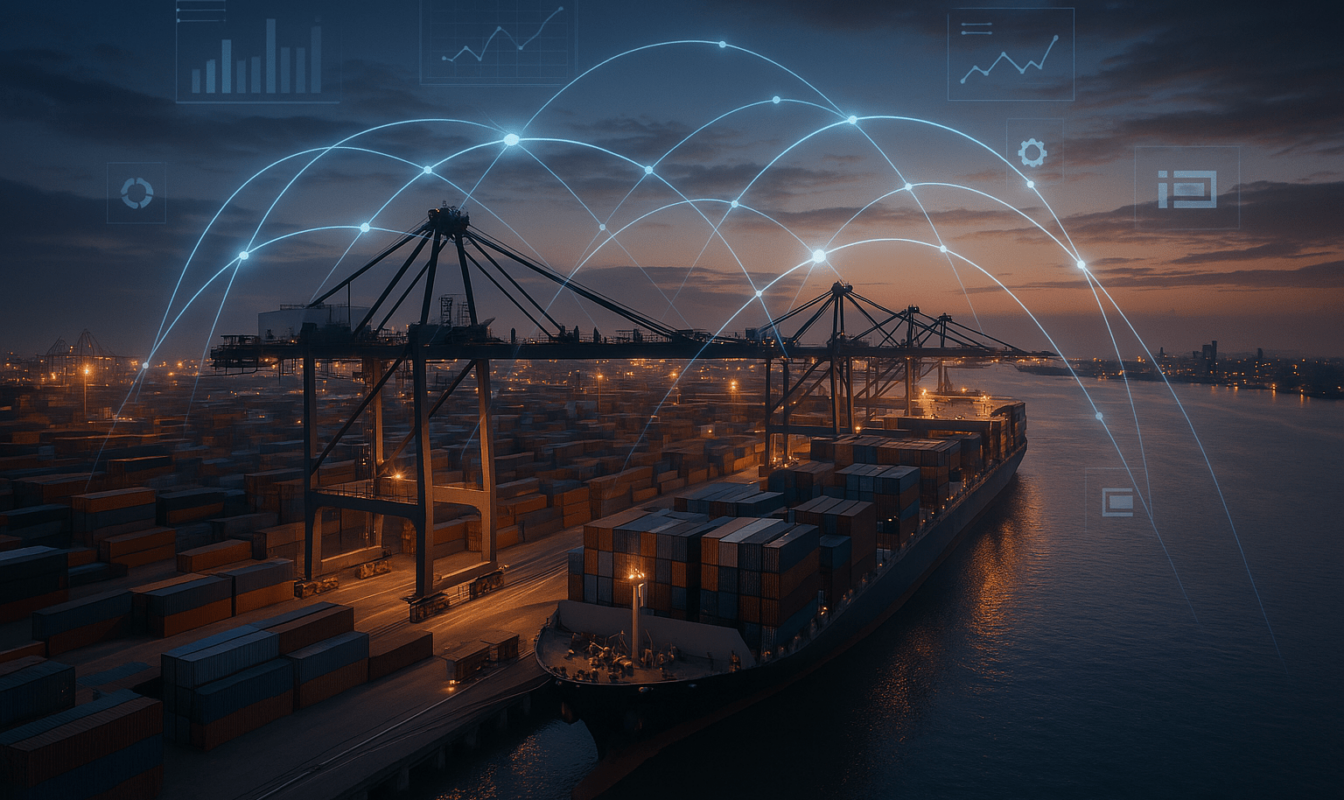The Top 7 AI-Powered Supply Chain Tracking Platforms

Across hundreds of deployments, I’ve watched great teams hit the same ceiling: they can track everything, yet still miss the moment to act. Coordinates comfort you until conditions change; then they’re just history. What actually moves the needle is intelligence layered on top of tracking—signals that forecast disruption, prioritize exceptions, and propose next steps. That’s what I’ve learned from customers in every lane and mode. Let’s unpack where traditional tools fall short and what AI adds to deliver real control.
The era of predictable logistics is over. In the last few years, supply chains have been battered by a relentless storm of disruptions. We have seen a global pandemic shut down ports, trade wars redraw shipping maps overnight, and geopolitical conflicts create no-go zones for carriers. According to the International Monetary Fund (IMF), these shocks have caused the sharpest spike in commodity prices in decades.
Add in the increasing frequency of extreme weather events, widespread labor strikes, and the simple fact that a single ship stuck in a canal can halt $9.6 billion of trade per day, and the picture becomes clear: chaos is the new normal.
In this environment, relying on a simple dot on a map is like navigating a hurricane with a paper umbrella. You see where you are, but you have no idea what’s coming next. Businesses are struggling with lost assets, damaged goods, and angry customers because their traditional visibility tools are fundamentally reactive. They tell you about a problem after it’s already costing you money. It’s time for a new approach. The future of supply chain visibility belongs to platforms that fuse real-time tracking hardware with the predictive power of Artificial Intelligence.
The Visibility Gap: Challenges of Traditional vs. AI-Powered Tracking
Not all visibility platforms are created equal. The leap from traditional tracking to an AI-powered system is significant, especially when facing modern challenges. Here’s a breakdown:
| Feature & Challenges | Traditional Visibility Platform | AI-Powered Tracking Platform |
|---|---|---|
| Primary Focus | Shows current location (Where is it now?). Challenge: Provides no context for delays or risks. | Predicts outcomes and risks (What will happen next, and why?). Solution: Offers proactive intelligence. |
| Data Source | Basic GPS pings, manual carrier updates. Challenge: Prone to errors, data lags, and gaps in coverage. | Fuses GPS, BLE, IoT sensors (temp, shock, light), and external data (weather, traffic). Solution: Creates a rich, verified, single source of truth. |
| Alerts | Reactive: “Shipment has stopped moving.” Challenge: Informs you of a problem too late to prevent it. | Proactive & Predictive: “Shipment is entering a high-theft zone and ETA will be delayed 4 hours due to port congestion.” Solution: Enables you to act before a crisis occurs. |
| Insights | Historical breadcrumb trails of past routes. Challenge: Cannot adapt to new, unprecedented events. | Anomaly detection, condition monitoring, security risk analysis, and root-cause analysis. Solution: Learns from disruptions to get smarter over time. |
| Business Value | Basic location awareness. Challenge: Fails to prevent financial losses from theft, damage, or delays. | Actionable intelligence that prevents loss, reduces costs, and improves customer satisfaction. Solution: Delivers measurable ROI and builds resilience. |
Top 7 AI Supply Chain Visibility Platforms: 2025 Review & Analysis
Here are the platforms that are leading the charge in combining intelligent hardware with powerful AI to deliver true supply chain control.
1. GPX – Scout AI Platform
Best For: Businesses needing the ultimate in real-time security, integrity, and intelligence for high-value or environmentally sensitive assets.
Tracking Technologies: Utilizes a powerful combination of proprietary hardware including GPS, Cellular (4G/5G), and an array of IoT sensors that monitor temperature, shock, vibration, light exposure, and tampering.
AI-Powered Features: Scout AI is the intelligence behind the platform, transforming raw sensor data into real-time predictive insights. Working with proprietary multi-sensor hardware (GPS/LTE-M, BLE, accelerometer, light, temperature, humidity, and optional shock/tamper), it continuously learns asset and lane behavior. The system detects true anomalies such as off-route movement, risky dwell times, door-open or light events, temperature excursions, and shock impacts—allowing teams to take preventive action before theft, loss, or spoilage occurs.
2. FourKites
Best For: Companies needing deep, real-time visibility across a massive global network with a strong focus on what happens at facilities, not just in transit.
Tracking Technologies: FourKites aggregates data from the world’s largest network of telematics and GPS providers, including trucks, rail, ocean, and air carriers. It also offers robust capabilities for tracking assets within a facility or yard using RFID and BLE.
AI-Powered Features: Its AI, named “Dynamic ETA®,” provides some of the most accurate arrival time predictions in the industry by analyzing over 150 data points, including driver hours-of-service and detention times. The platform also uses AI for dynamic yard management, automating gate-in/gate-out processes and optimizing dock scheduling to eliminate bottlenecks.
3. Tive
Best For: Shippers of pharmaceuticals, fresh food, electronics, and other high-value goods where in-transit condition is as important as location.
Tracking Technologies: Tive is a hardware-first company. Its flagship products are multi-sensor 5G trackers that travel with the shipment. These devices provide live data on location (GPS, Wi-Fi), temperature, humidity, shock, and light, giving a complete picture of the shipment’s environment.
AI-Powered Features: The Tive platform uses AI to turn this stream of sensor data into actionable alerts. It can flag a temperature excursion in a cold chain shipment, alert a manager if a high-value package is opened unexpectedly (light sensor), or confirm if a fragile item was dropped (shock sensor). This allows for immediate intervention to save a shipment.
4. Project44
Best For: Global organizations needing a single source of truth for all shipments across every mode of transportation.
Tracking Technologies: Like FourKites, Project44 is a data aggregation powerhouse. It connects directly to carrier GPS, ELD (Electronic Logging Device), and telematics systems across ocean, air, road, and rail to provide a unified data stream.
AI-Powered Features: The platform’s AI cleans and standardizes this massive, messy dataset to provide reliable, real-time location information. Its AI assistant, “Movement,” uses natural language processing, allowing users to simply ask questions like, “What’s the status of my shipments to the Port of Long Beach?” and get an instant, intelligent summary.
5. Overhaul
Best For: Companies shipping high-value, theft-prone goods that require active risk management and security monitoring.
Tracking Technologies: Overhaul employs a variety of tracking solutions, including covert GPS trackers and IoT sensors that can be embedded within shipments. They also integrate with a vehicle’s existing telematics systems.
AI-Powered Features: Overhaul’s AI is focused on security. It establishes a “digital chain of custody” and actively monitors for deviations. If a truck door is opened at an unauthorized location or a shipment stops moving in a known theft hotspot, the AI triggers an immediate alert, often to a live security team that can intervene.
6. Decklar (Formerly Roambee)
Best For: Enterprises needing on-demand, end-to-end asset monitoring for everything from individual packages to entire shipping containers.
Tracking Technologies: Decklar provides a “sensor-in-a-box” solution. Customers can deploy portable sensor devices (which include GPS, BLE, temperature, and more) as needed. This makes it highly flexible for monitoring assets that are not company-owned.
AI-Powered Features: Decklar’s AI platform, called “Honeydew,” provides real-time insights and predictions based on the sensor data. It excels at supply chain “signal intelligence,” helping businesses understand not just the location and condition of their goods, but the underlying patterns and risks in their logistics network.
7. Samsara
Best For: Businesses with large vehicle fleets looking for a connected operations platform that combines telematics, safety, and efficiency.
Tracking Technologies: Samsara is a leader in vehicle telematics. Their hardware includes high-precision GPS, dash cams, and various vehicle and equipment sensors that plug into a central “Vehicle Gateway.”
AI-Powered Features: Samsara’s AI processes trillions of data points from its network to deliver powerful insights. It uses AI-powered dash cams to detect unsafe driving behaviors like distracted driving in real-time. Its AI also powers intelligent route optimization, dispatching, and fuel efficiency reporting, helping fleets reduce costs and improve safety simultaneously.
Moving From Visibility to Intelligent Control
Knowing where a shipment was yesterday is useless. The competitive advantage, and increasingly, the requirement for survival, comes from knowing where it will be tomorrow and what condition it will be in when it arrives. AI-powered tracking platforms provide this predictive intelligence. By fusing real-time sensor data with powerful analytics, they allow businesses to move from a state of reactive crisis management to one of proactive control, protecting assets and building a more resilient, efficient, and trustworthy supply chain.
Frequently Asked Questions (FAQs)
How does AI actively prevent cargo theft and damage?
AI-powered platforms prevent loss by creating a “digital chain of custody” and monitoring for any breaks in that chain. The AI establishes normal patterns and triggers immediate alerts for anomalies like a truck door opening at an unauthorized location or a vehicle veering into a known high-risk area. Additionally, embedded IoT sensors can instantly flag if a package is opened (light sensor) or a fragile item is dropped (shock sensor), allowing managers to intervene before the asset is lost or the damage becomes irreversible.
How do AI platforms gather data from so many different carriers and vehicles?
These platforms act as powerful data aggregation hubs. They connect directly to the world’s largest network of logistics data sources, including carrier GPS, Electronic Logging Devices (ELDs), and existing telematics systems across ocean, air, road, and rail. The AI then cleans and standardizes this massive, often messy, dataset to provide a reliable, single source of truth for all shipments, regardless of the carrier handling them.
What specific IoT sensors do modern AI trackers use?
Modern AI tracking is a multi-sensor solution that goes far beyond basic GPS. The hardware typically includes a powerful combination of sensors to provide a complete picture of an asset’s journey and condition. Common sensors include:
- Location: GPS, Wi-Fi, Cellular (4G/5G), and Bluetooth Low Energy (BLE).
- Condition: Temperature, humidity, shock, vibration, and light exposure.
- Security: Tampering and door open/close sensors.
Beyond location, what is the real business value of features like predictive ETAs?
The business value lies in shifting from reactive problem-solving to proactive, intelligent decision-making. A predictive ETA, powered by AI analyzing over 150 data points like traffic, driver hours, and port detention times, is far more accurate than a simple GPS estimate. This accuracy allows businesses to eliminate bottlenecks at facilities, optimize dock scheduling, reduce costly delays, and ultimately improve customer satisfaction by providing reliable delivery windows. This delivers a measurable return on investment by preventing financial losses.
What’s the next step beyond predictive tracking? Can AI create a self-healing supply chain?
Yes, the technology is trending in that direction. The current generation of AI already learns from disruptions to get smarter over time. The next evolution is moving from predictive intelligence (“What will happen?”) to prescriptive intelligence (“What should we do about it?”). As AI processes more data, it can not only foresee a delay but also model solutions, such as autonomously re-routing a shipment around congestion or recommending the most efficient recovery plan. This creates a more resilient, adaptive, and trustworthy supply chain that can proactively control outcomes rather than just react to crises.
What is the typical pricing model for these AI platforms?
Most platforms operate on a Platform as a Service (PaaS) or SaaS model. The pricing is typically a per-asset, per-year subscription fee that bundles hardware leasing, software access, and customer support. This predictable cost structure avoids large upfront capital expenditures for hardware.
How difficult is it to implement an AI tracking platform?
Modern platforms are designed for rapid deployment. Implementation involves a straightforward hardware activation process and integration with your existing systems like a TMS or ERP via robust APIs. Most enterprise deployments are fully operational and delivering value within four to eight weeks, guided by the provider’s dedicated onboarding team.
How secure is the logistics data collected by these AI systems?
Security is a top priority for enterprise-grade platforms. Your operational data is protected with multiple layers of security, including end-to-end encryption for all data in transit and at rest. Leading providers are SOC 2 compliant and utilize secure cloud infrastructure from vendors like AWS or Google Cloud to ensure your sensitive information is always protected. Always check the reviews of the platforms you are considering, as security should remain a top concern in your evaluation.

